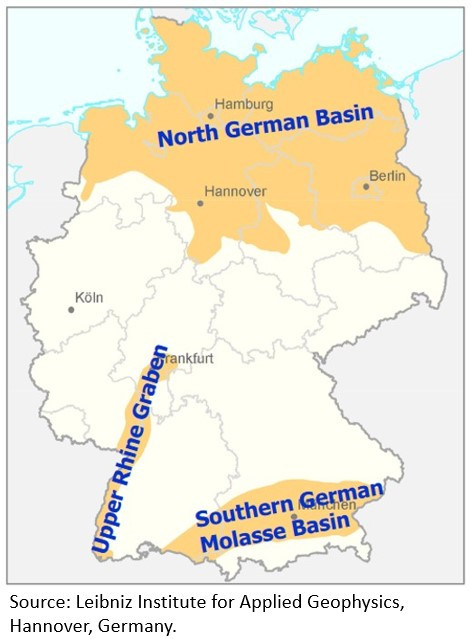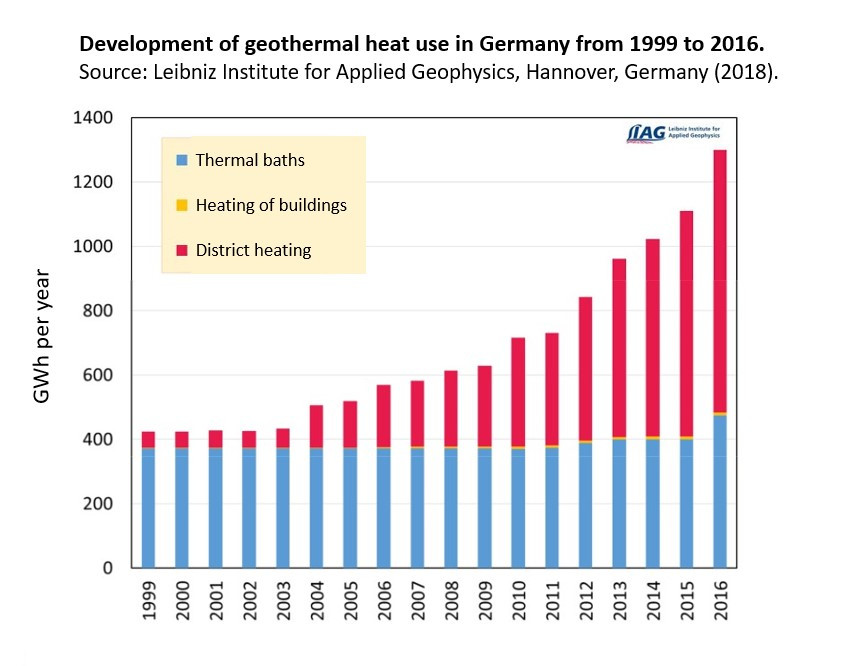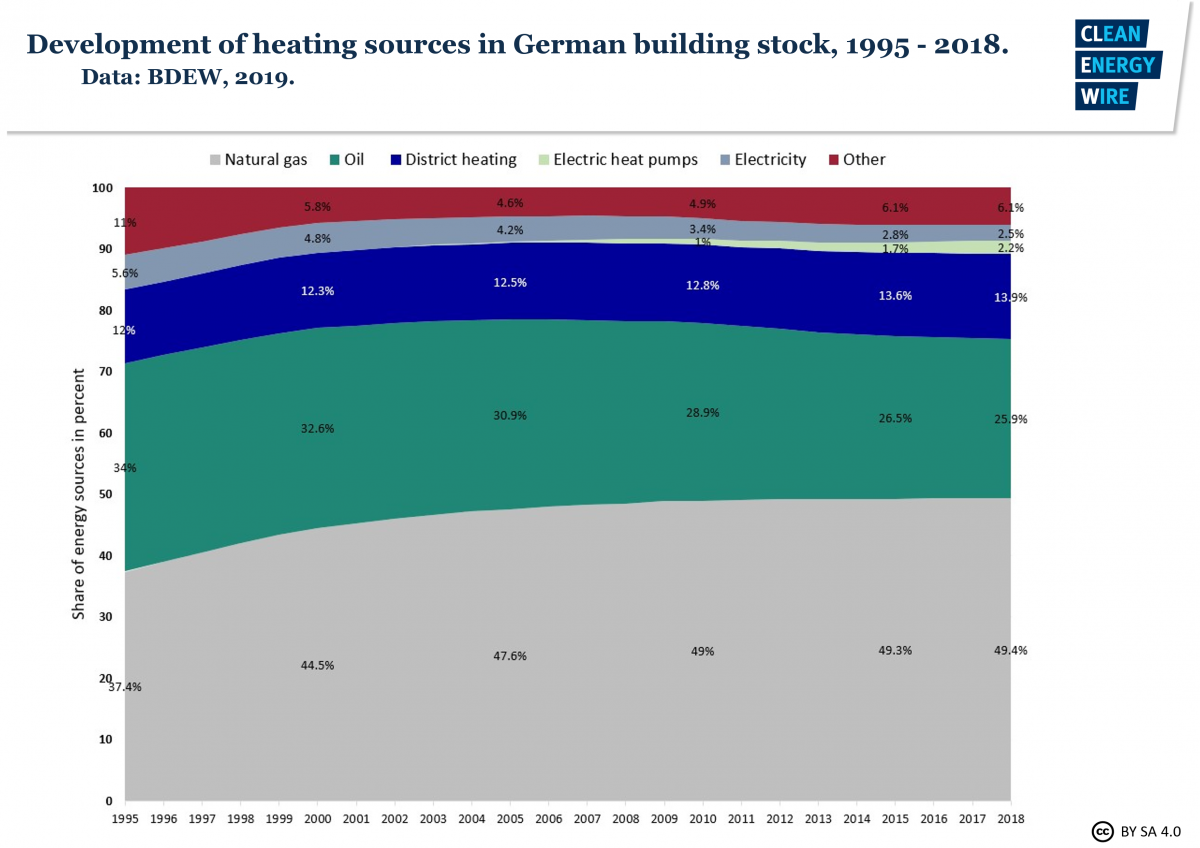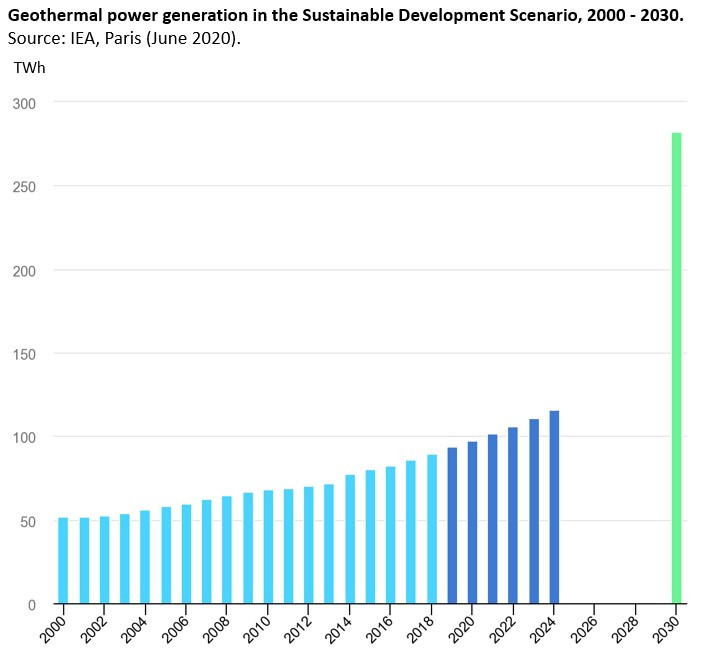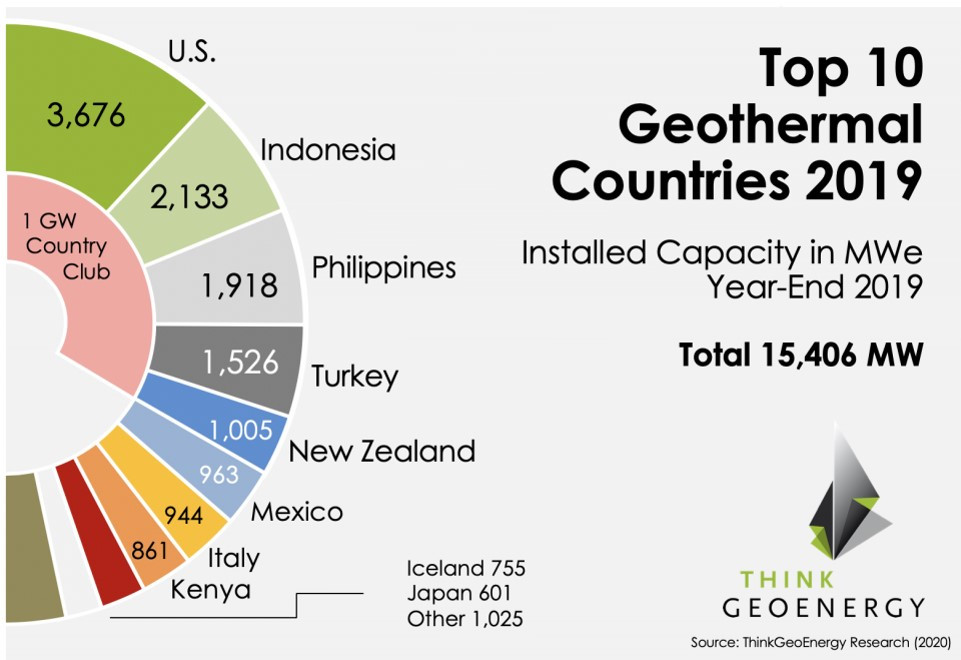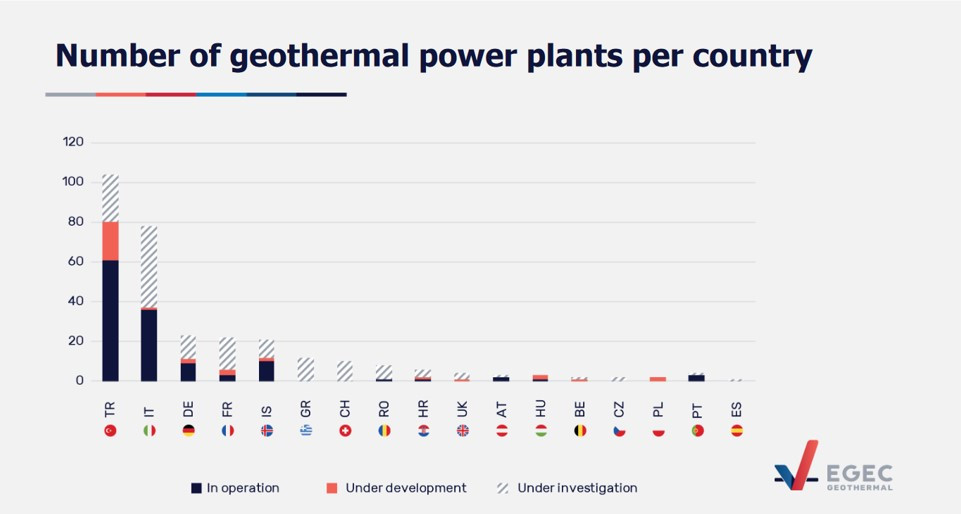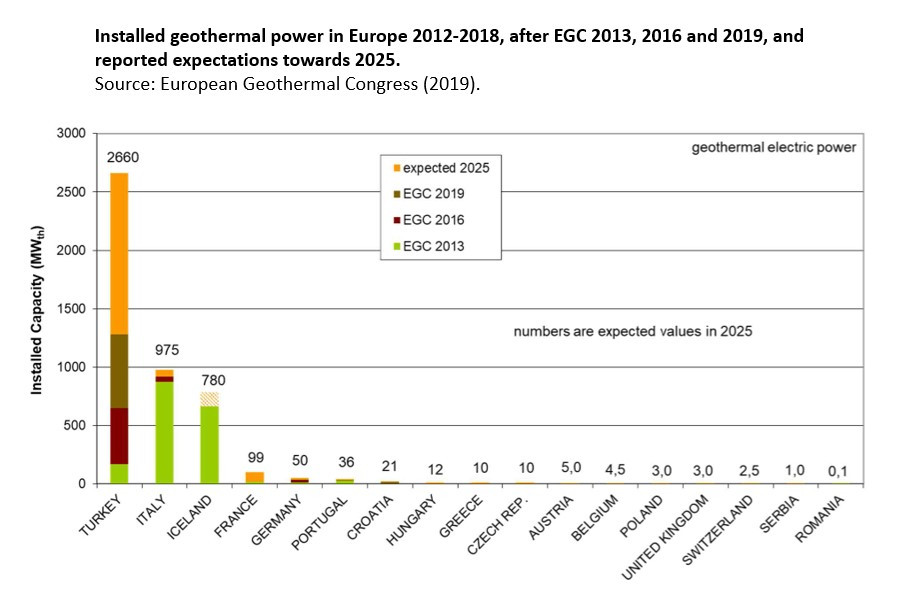Geothermal energy – Germany's largely untapped renewable heat source
Germany is not a frontrunner in geothermal energy, neither in Europe nor worldwide, despite the fact that it boasts plentiful hot water reserves beneath its surface. And until recently, Germany hadn’t pursued exploiting this huge potential. Deep geothermal plants account for just 0.1% of the country’s heating and cooling. And shallow geothermal units, usually installed in home and buildings, chip in with just 1.2%.
Reports by leading German institutes and agencies, however, underscore the significant role that geothermal must play in order for the country to complete its Wärmewende, or heating transition. And they show starkly how far Germany has to go.
The Leibniz Institute for Applied Geophysics (LIAG) estimates that Germany has the potential to increase production of deep geothermal energy from the current 1.2 terawatt hours (TWh) of climate-neutral heat per year to 100 TWh of heat per year by 2050. And the think tank Agora Energiewende argues that the number of shallow geothermal units, which use ground-source heat, should rise from 420,000 to 2.5 to 3 million. The German Environment Agency (UBA), Germany’s environmental protection agency, calculates scenarios for Germany’s heating sector that show shallow and deep geothermal covering about half of the country’s heat supply by 2050.
Geothermal plants in Germany
There are currently 37 deep geothermal plants in Germany and 30 more in the planning stage.
Germany has three regions with deep geothermic waters: the North German Basin, the Upper Rhine Rift, and the Molasse Basin.
Shallow geothermal units
Almost all of Germany boasts shallow heat sources suitable for shallow geothermal technology, which uses ground-source heat pumps to boost temperatures that heat homes and buildings. About 420,000 ground-source heat pumps provide heating to buildings in Germany. Six to seven times that many will be required to hit ambitious climate targets such as reducing annual greenhouse gas emissions in the building sector by between 70 and 72 million tonnes of CO2 by 2030.
Newly installed ground-source heat pumps in 2019: 20,000
In Germany, Bavaria has the most expansive geothermal investments, but the state of Brandenburg boasts the highest number of geothermal heat pumps per 100,000 persons: 575.
Current use of geothermal heat in Germany
The use of geothermal heat is not new in Germany or in Europe. Thermal waters have directly supplied thermal baths for thousands of years. Today many German swimming pools and spas (see graphic below) either use thermal waters directly or are heated indirectly through geothermal sources.
But for the most part, Germany still heats its buildings with oil and gas. Almost a third of Germany’s total final energy consumption in 2018 went into space and water heating in buildings. The building sector’s greenhouse gas emissions, which arise almost solely from heating, add up to 15 percent of total emissions – and almost 30 percent including indirect emissions. Currently, more than 90 percent of Germany’s heating systems are fuelled with oil and natural gas.
There are pros and cons to geothermal energy. On the plus side, it is practically infinite in volume, as well as a very clean energy source. Its power plants are small and quiet. Geothermal sources generate power, heat, and cooling. Moreover it is a constant source of energy, unlike wind and solar power that are weather dependent. And ground-source heat pumps use significantly less electricity than other heating technologies.
Geothermal energy also has drawbacks, which explains its underuse in Germany today. For one, it is not emissions free. The subterranean fluids contain gases, largely nitrogen and carbon dioxide, both of which are greenhouse gases. And there are safety concerns as deep drilling and hydraulic fracking can cause tremors and even earthquakes. Furthermore, drilling costs in particular are very high. A typical heat-and-power geothermal plant today costs about €50 to €60 million. The planning and construction of a single plant takes about six years.
Geothermal energy has a global future beyond Germany, and indeed many countries are far ahead with its development. The International Energy Agency (IEA) foresees geothermal’s power production world-wide nearly tripling by 2030.
Globally, the U.S., Indonesia and Philippines’s development of geothermal energy dwarfs that of most of Europe. In Europe, Turkey and Italy lead in number of deep geothermal plants and installed capacity (see graphs below). Both Sweden and the Netherlands have ambitious programmes for expanding the use of geothermal sources. Around a fifth of all buildings in Sweden rely on geothermal heat pumps for heating and cooling, making it the world leader in the usage of shallow geothermal. This covers 10 percent of total heat demand in the country.

